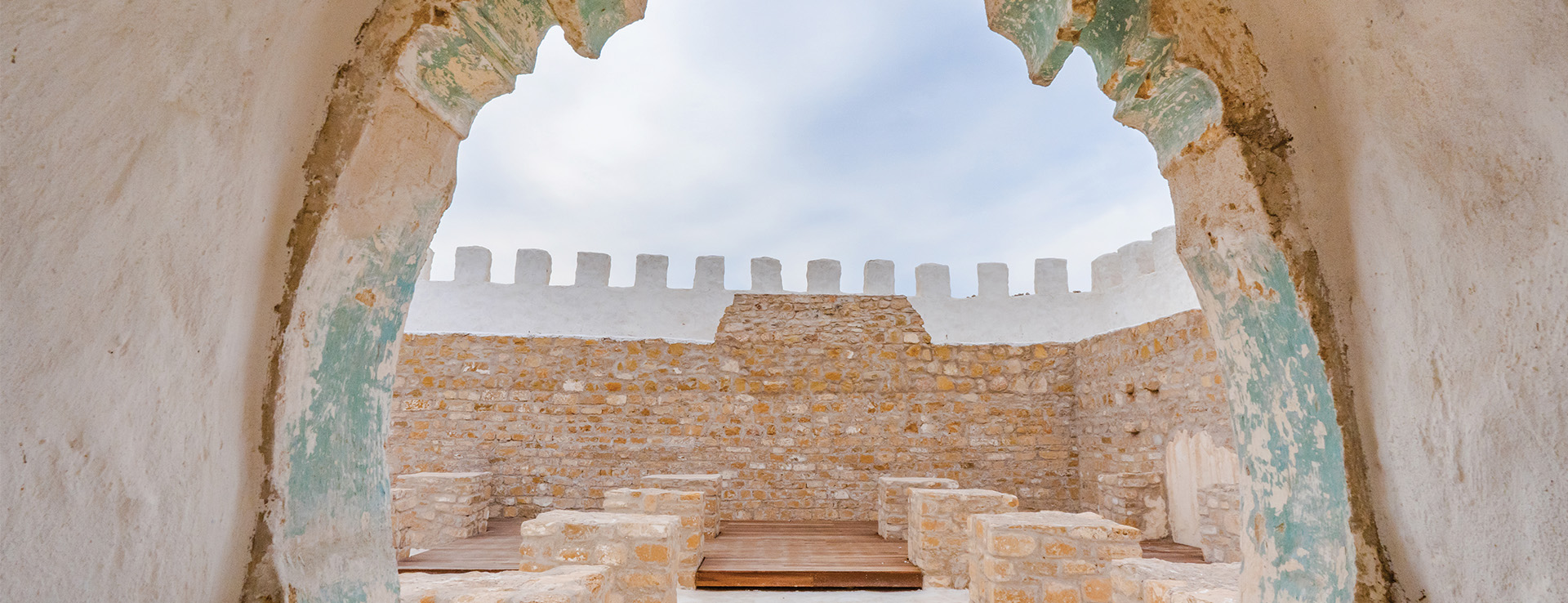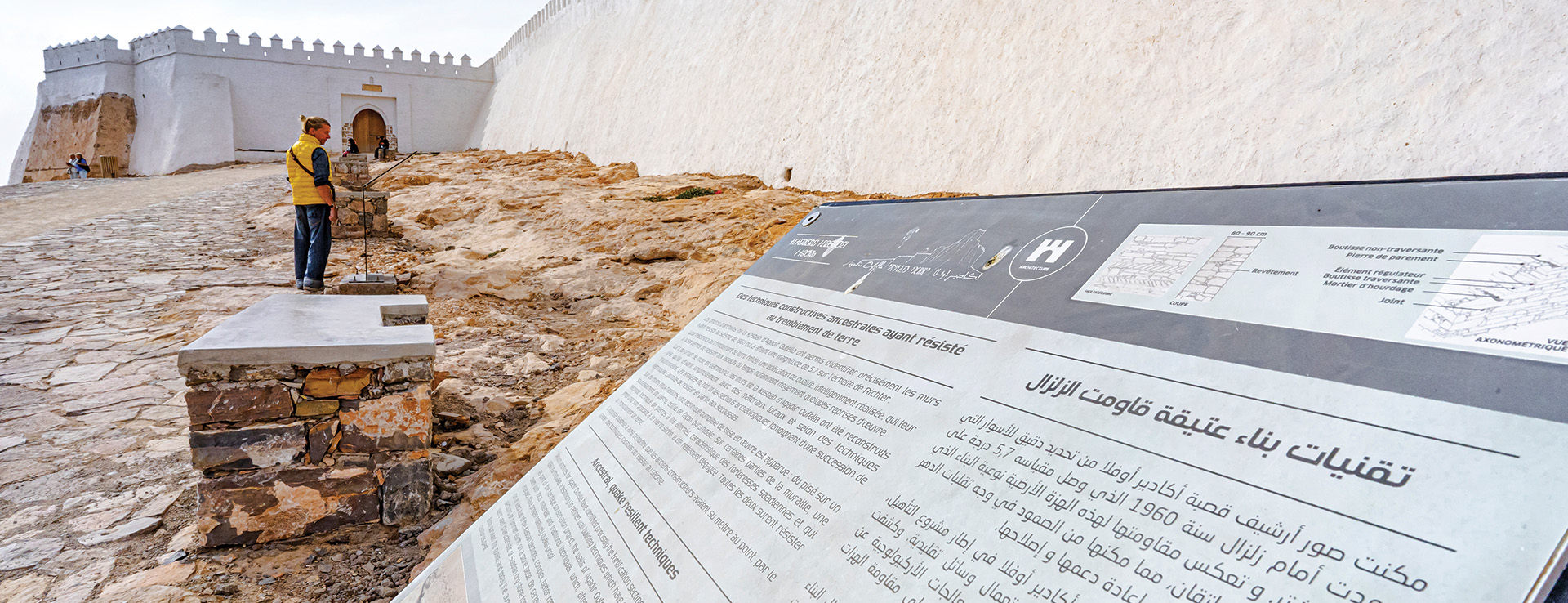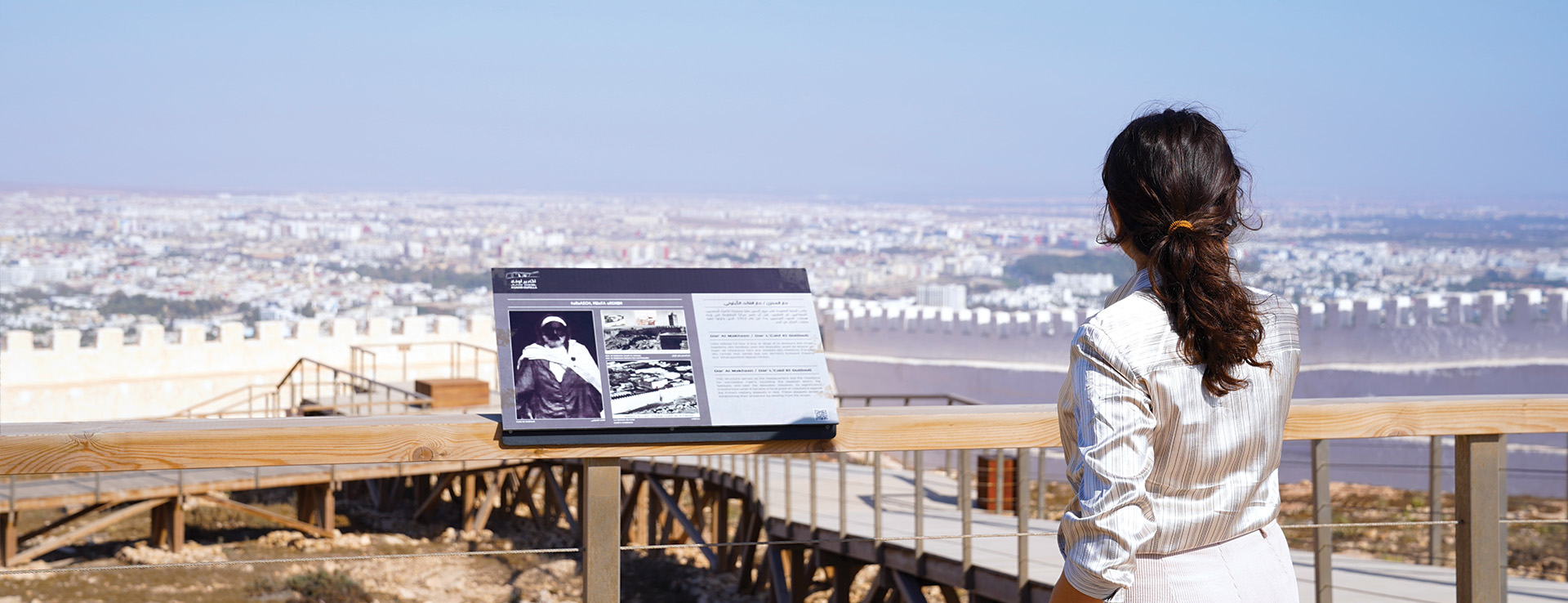Heritage of the Kasbah of Agadir Oufella
In order to restore the East wall with accuracy, the materials, the architectural and historical specificities have been researched and documented. A preventive excavation operation was carried out to precede the restoration, making it possible to understand the wall stratigraphy of the rampart. Several stratigraphic layers have been unearthed up to the bedrock, as well as archaeological material providing clues to past ways of life at this location of the ramparts.
Over its great length, the East wall is made up of an original rammed earth, with many resumptions of stone work on its periphery, but being itself still very solid over nearly four meters in average height. Once the foundations were cleared and checked, all the fragile parts were consolidated or restored. To rebuild the collapsed parts of this wall after the earthquake, the stone found on the site was favored (reused stone). Originally, the stones were worked with earth mortar (tallaght), but to reinforce the solidity of the structure, the local stone was roughcast with sand-lime mortar.
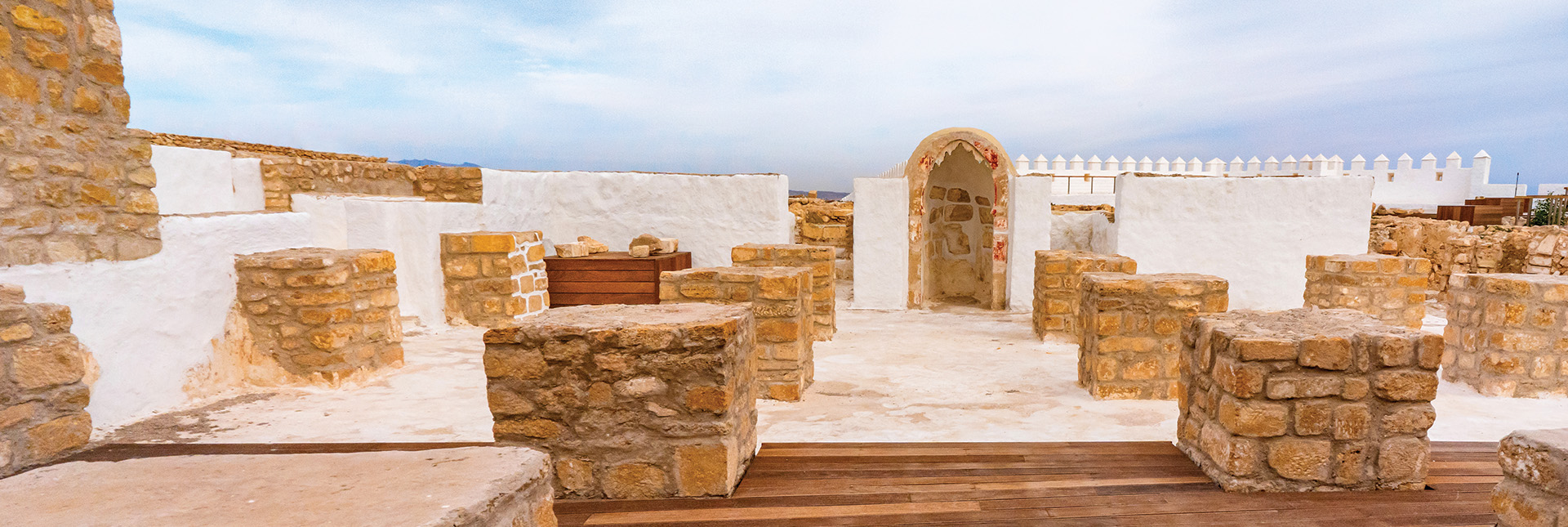
Kasbah Agadir Oufella
To improve the comfort of your visit, the Kasbah Agadir Oufella provides you with a set of services to ensure a quality visit.
On site, the reception and security agents are present to advise you and answer your questions.
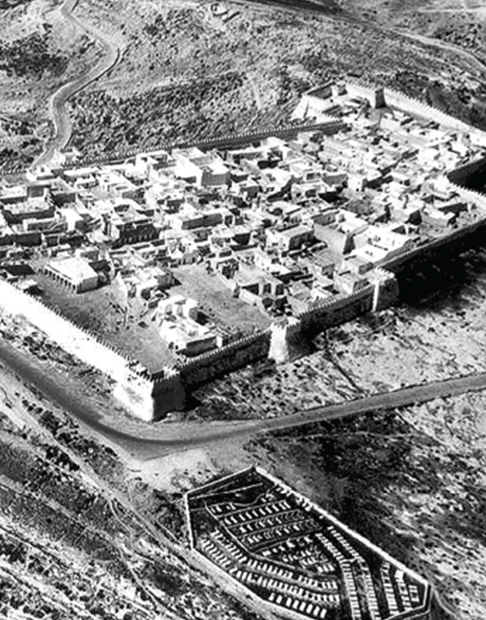
History and memory
DiscoverSixty years after the terrible earthquake, it was decided to give this emblematic site of past and recent Morocco’s history, a new life, in compliance with international protocols for post-disaster heritage interventions, in order to open the site to both visitors and those who want to pay their respects.
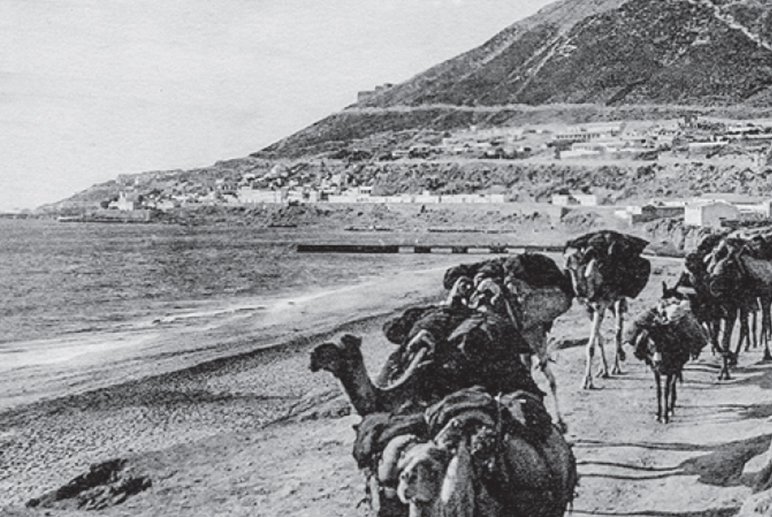
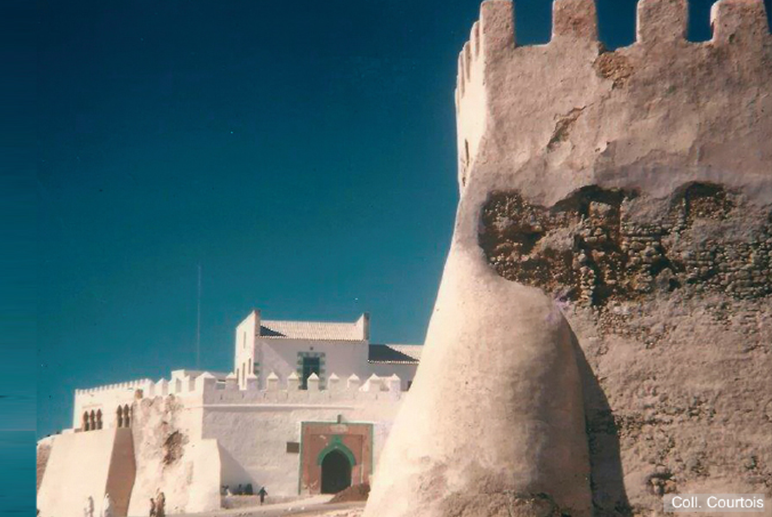
The fortress of Agadir has embodied for more than six centuries the importance of this port at the outlets of the great continental routes that linked the Sahara and Europe, Africa and Asia. An exceptional promonatory site overlooking a port structure adapted to international trade, the site was classified as a historical monument in 1932, just after the classification of the patron saint Sidi Boul Knadel in 1922 as a “remarkable site”, facing the sea from the foot of the hill. However, today, its remains are a painful place of memory constantly reminding the inhabitants of the terrible night of February 29, 1960.
News
-

19 September 2024
New opening times for the Kasbah of Agadir Oufella
Read more -
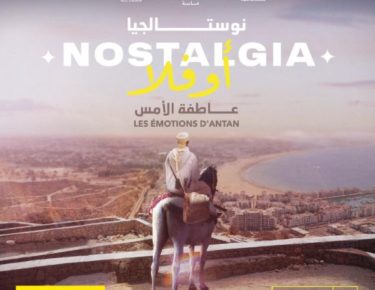
29 July 2024
Nostalgia at Agadir Oufella: A Journey Through the Time
Read more -
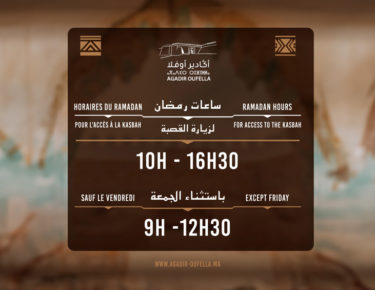
12 March 2024
Special Ramadan hours in Agadir Oufella
Read more -
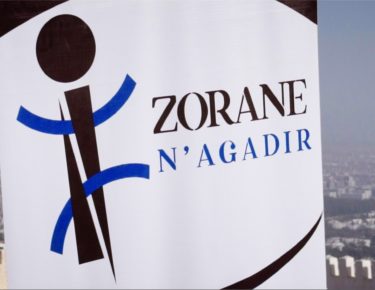
06 March 2024
Commemoration of the 64th anniversary of the agadir earthquake
Read more -
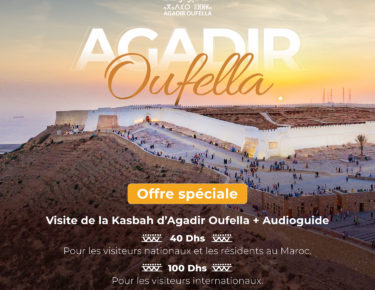
24 February 2024
Special offer for an immersive discovery!
Read more -
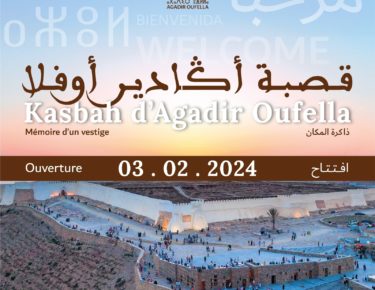
01 February 2024
Opening of the Kasbah Agadir Oufella
Read more -
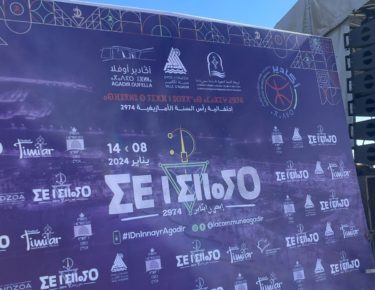
13 January 2024
Agadir celebrates Yennayer 2974
Read more -
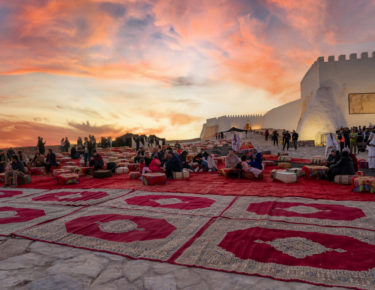
18 January 2023
Agadir Oufella celebrates the Amazigh New Year (Yennayer)
Read more
